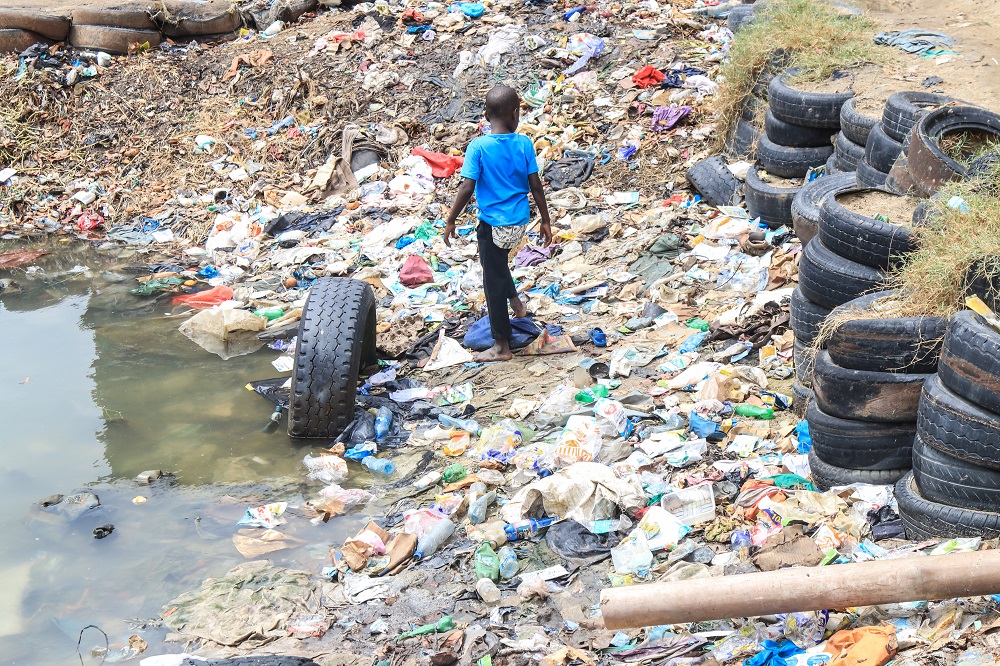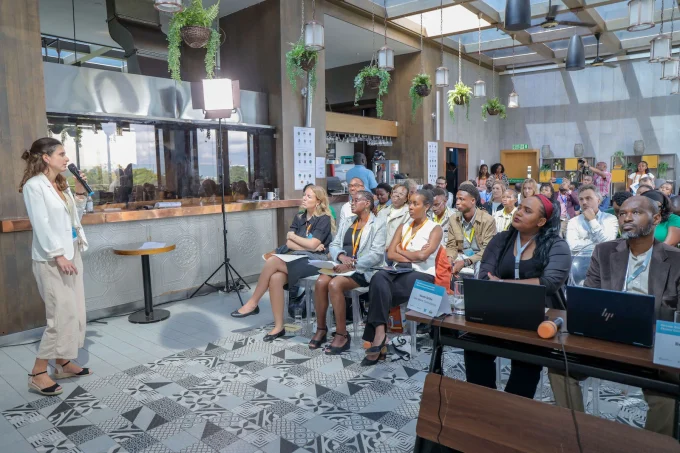BY JOSEPHINE WAWIRA
Plastic, plastic, plastic everywhere! Not a place you can turn to without being greeted by the sight of plastic.
Plastic is a doubled edged sword. It is very much a part of our lives, being a packaging material for many of the products we consume and also being a primary or secondary raw material for many items including electronics, furniture, motor vehicles, planes and ships. Its affordability and availability makes it the natural go to for manufacturers and producers seeking to maximize return on investment.
At the same time, plastic presents serious challenges to almost every nation. Just what do you do with plastic when you no longer need it? Hide it, burn it, bury it, dump it or simply toss it away? Each of these choices comes with a steep price on ecosystem health and environmental integrity. Burning of plastics releases greenhouse gases into the atmosphere which pollutes the air and contributes to climate change. Burning is therefore, not the option we want to put on the table especially considering the ubiquity of plastic.
But perhaps the most outstanding thing about plastic is that it does not biodegrade. Depending on its chemical composition, plastic can live on in water or in the soil for hundreds of years hurting biodiversity and often ending up in the food chain, which can lead to health complications. Yet, recent statistics show that only 27% of all plastic waste in Kenya is collected. Out of these, 8% is collected for recycling and the remaining 19% disposed of in unsanitary landfills.
It is these downsides of plastic which inspired the 2017 ban on manufacture, import and use of plastic carrier bags within the Republic of Kenya. In 2020, another critical ban was announced: no single use plastics in protected areas (game parks, gazetted forests, marine parks etc).
These efforts have yielded positive results but we have only just begun. There is still a long way to go. This is where a Plastics Pact could come in. It is an initiative that will bring together the government, businesses, civil society, researchers, academia and other stakeholders to work towards a circular economy for plastics; where it does not become waste.
How exactly will this work?
Four years since the ban on the plastic carrier bags, we are still largely operating in a linear economy; we take, make, and we dispose of. This extractive model is not sustainable for businesses, people or the environment. It depletes finite resources, pollutes our environment and contributes to global challenges such as climate change and biodiversity loss. As the world commemorated the Plastic Bag Free Day on July 3rd, it is crucial that we all endeavor to adopt a plastic free diet going forward. We must shift our focus to a circular economy, with innovations and business models that design out waste, keep materials in use, and protect and restore our environment. There are a number of things that every Kenyan can do to realize an economy with zero waste.
- Eliminate plastic.
There are so many types of plastics that only require self-consciousness for us to realize we don’t need them. Think about plastic straws, disposable plates, cups, spoons and forks. In place of straw, you can drink directly from the cup. If you are going to have a party or are planning a picnic, you can arrange to bring your own utensils and cutlery. You can also bring along your own refillable water bottle and avoid the need to use bottled water. Also, when out shopping, you can bring along your own kiondo to eliminate the risk of being handed carrier bags which cannot be reused. By refusing problematic and unnecessary plastic, you are contributing to an economy in which there is no plastic waste.
READ>>>>>Kenya Transitioning to a Circular Economy: KEPSA Report
- Innovate
The second thing can be done by producers and researchers but the actions of consumers can inspire or even force it. It is known as innovation. The idea here is to rethink and redesign to create a class of plastics that are reusable, and recyclable. It is also possible to create affordable alternative packaging materials made of other biodegradable matter. Innovation will be the name of the game as we seek to build future-proof businesses. Those who don’t innovate will most likely fall by the wayside. But more than that, innovation will deliver a future with zero plastic waste.
- Circulate
The third and perhaps the most important is circularity. What this means is that plastics will be designed in such a way that they can be easily put back to the production process to make similar or related products. This is the essence of circular economy. It eliminates the need to extract finite raw materials from the earth but it also keeps plastics within the economy and, therefore, out of the environment.
Complementing and accelerating existing government programs
Initiatives that aim to support the government’s existing programs, such as the Extended Producer Responsibility (EPR) Regulations will go a long way in ensuring a future with zero plastic waste. The aim of the EPR Regulations is to enhance resource use efficiency, stimulate innovation, spur recycling and reduce the amount of waste destined for final disposal. It further aims to make producers responsible for the environmental impacts of their products throughout the product chain, from design to the post-consumer phase.
We must therefore, recognize that this vision will require different action in different places, and that is why, to provide the government with a much-needed boost in successfully implementing the regulations and other policies, public-private partnerships will most definitely come in handy.
In 2020, Sustainable Inclusive Business, under the Kenya Private Sector Alliance (KEPSA), in collaboration with the Kenya Association of Manufacturers (KAM) and the Ministry of Environment and Forestry (MoEF), officially launched the Business Plan Model for a PRO, the first of its kind in the country. This is part of the ministry’s and the private sector’s aggressive and continued efforts in addressing Kenya’s challenges in waste disposal and especially plastics. The Business Plan Model is tailored to the Kenyan framework and taking into consideration current draft regulations for the EPR. SIB-K continues to play a critical role, as part of the technical multi-stakeholder committee for EPR; supporting the government and the private sector with expertise, knowledge and network.
READ>>>>>Push to Have Kenya Adopt a Circular Economy
A plastics pact, if properly implemented, will help unlock investment in support of the collection, reuse and recycling of waste in an environmentally sound manner. In respect to the health, safety, and rights of all people, including those in the informal sectors, a pact geared towards a common vision among stakeholders; which complements and accelerates existing government programs, initiatives and policies such as the EPR while involving local actors; and supports the Kenyan recycling sector: delivering jobs, skills and investment opportunities; is patently a sure bet.
Josephine Wawira is the Communications Officer at Sustainable Inclusive Business – KEPSA













Leave a comment